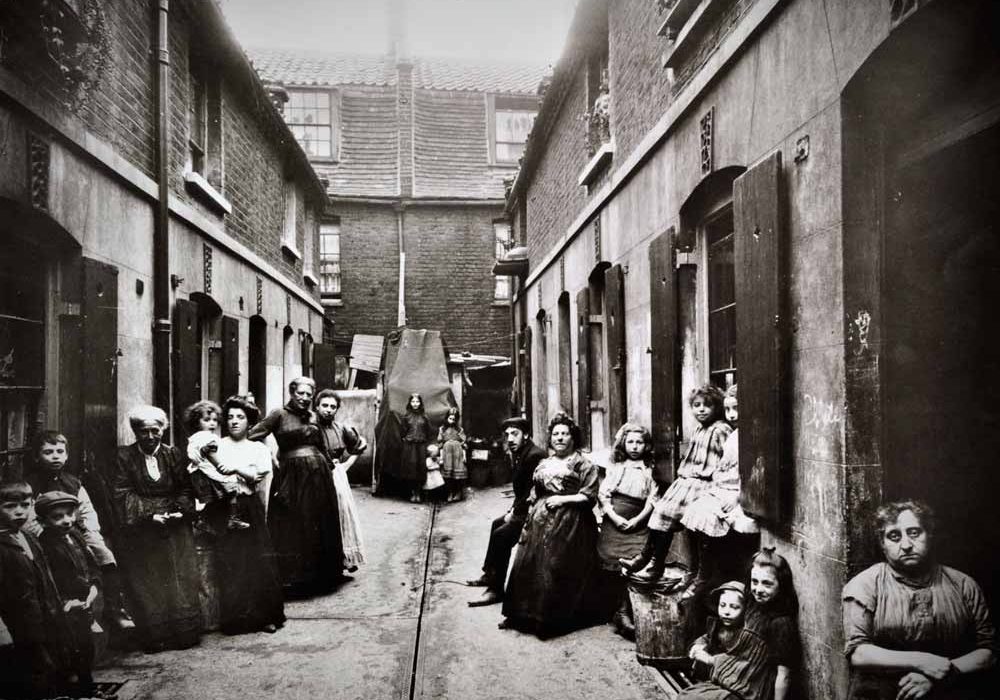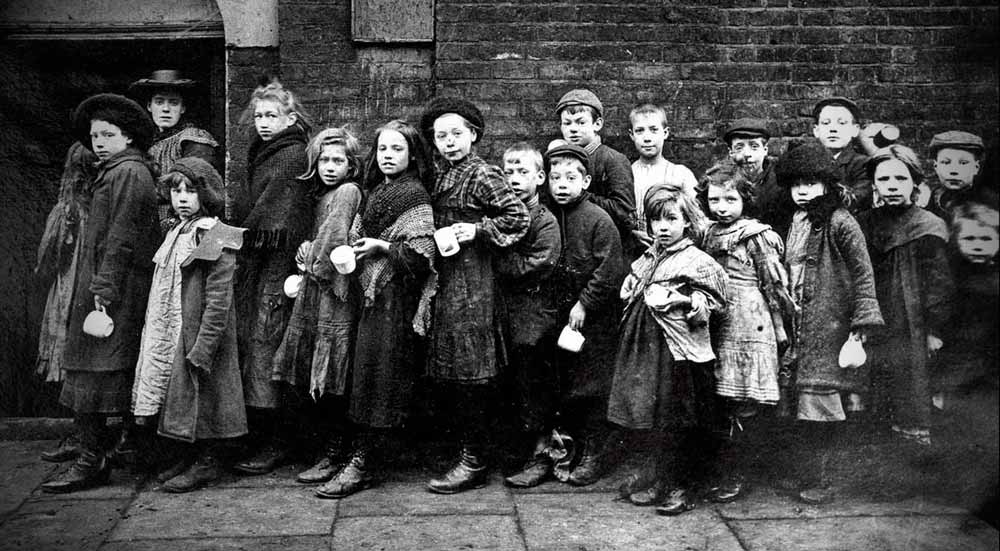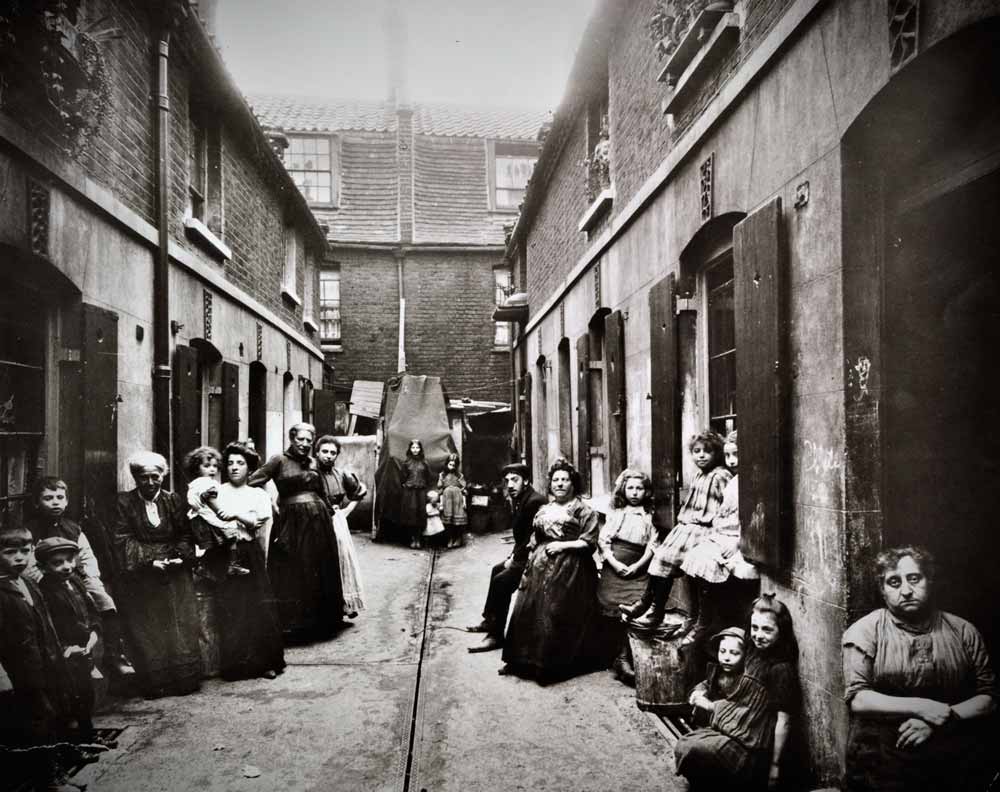
The miseries of the Victorian poor
by Northern Life

On August 13th, 1856, 35-year-old Charles Bick, a father of four in Brunswick Street, Keighley, shot himself. He was suffering from lunacy. At about the same time up Park Lane, four orphans, children of the late John Bottomley, were in understandable difficulties; the oldest was aged 13, the youngest only three months.
Meanwhile at Paper Mill Bridge, 27-year-old Mary Ann Peel was having problems raising her three children. Her husband had gone away to the Cape of Good Hope. At Bogthorn, John Clough was infirm by the age of 59, and his daughters were cripples.
Michael Howley and his wife had abandoned their five-year-old child in the Clubhouses.
Sarah Milner of Park Lane was lame, and had a daughter confined to bed.
The small inadequate people whom history forgets are not necessarily lost to us, thanks to the thoroughness of surviving Victorian poor law records. In Keighley around the mid-l800s it was customary to publish a six-monthly ‘List of Paupers whose Relief is Charged against the Parish.’ Incidentally, you were classed as a pauper if you accepted as little as one shilling relief, and you got nothing if you were known to gamble, frequent alehouses, or keep a dog.
In 1856 there were 49 inmates – the ‘In-Door Poor’– in Keighley’s Old Exley Head workhouse, condemned in 1842 as ‘a mere third-rate farmhouse of the seventeenth century’ and not replaced by superior new premises till 1860. Nine were over 65 years old; 20 were children under ten. The latter included three unaccompanied Hirds, two Midgleys, two Bottomleys, two Irvings and three
Bradleys.
Even more poignantly, the lists of Keighley’s ‘Out-Door Poor,’ granted relief to tide them over in the outside world, chart a ‘via dolorosa’ through a wide range of human misery.
The staple trio of old age, illness and unemployment are evident in large measure, together with deserted wives and illegitimate offspring. You could be old and infirm by your sixties (the youngest such was 59), although hardy Susannah Brigg had managed to survive to 101, costing the poor rates £1.10s in six months. But many wilted beneath a catalogue of misfortunes.
Old Sally Naylor, of Low Bridge, was blind and her daughter weak in intellect. Ann Smith suffered bad health, while her daughter had only one leg and her son was subject to fits.
James Welsh of the Pinfold was infirm, had a large family, his wife had sore eyes and his son Charles was a cripple.
At Harewood Hill, Robert Sugden’s surviving children were unable to cope. They were sickly, their father was in Wakefield Asylum, and a brother and sister had just died. Their total relief, including meat, wine and funeral expenses, came to £8.7s.8d. Illness and disability took many forms. Ann Watson’s family had typhus fever, Betty Smith’s son and daughter were both ‘sick in the pox.’ George Carter had suffered a paralytic stroke, while Luke Shackleton, an imbecile of Brow End, had put his shoulder out.
Ann Emmott had been hurt by a fall, William Rhodes’s son had scurvy, William Tansey of Fell Lane had broken his leg ‘at the railway,’ and Mary Brook’s daughter had intriguingly ‘got ill burnt &c.’ Patrick Rooney, of Goose Eye, had an original reason for receiving £1.4s: ‘Daughter got all her fingers cut off (but one).’ The nature of her injuries, in conjunction with her residence, suggests
that she was probably employed as a rag-cutter at John Town’s, paper makers of Turkey Mill.

Women found themselves abandoned for a variety of reasons. The husbands of Mary Hodgson and Maria Wood had ‘gone for a soldier’.
Matthew Welsh, John Gawthrop, Holmes Smith and Absolam Snowden had ‘gone for a Militia’ which in wartime (the Crimean War waged from 1854 to 1856) could amount to much the same thing. Between them, they left five women and 17 children in financial straits.
Other fathers of families had simply absconded, while William Bradley, of Townfield Gate, forthrightly ‘refused to support his wife and children.’ The parish supported them instead, to the princely tune of five shillings. Ann Wade of Goose Eye fared rather better when she and her husband failed to ‘agree to live together’: she got £2.14s.
The husbands of Mary Ann Dunn, Mary Hargreaves and Jane Horner had gone to America, as had the father of Bridget Gonnegon’s children, who however may not have been her husband.
Grace Cockcroft’s husband had been transported, and a veritable rash of menfolk were, or had been, in prison, including 31-year-old Patrick Waterhouse of the Pinfold who was ‘part in prison and sickness.’ Since, according to contemporary police records, a character ‘commonley caled Mucky Sam’ had thrown Patrick Waterhouse ‘over the batlment at Damside a depth of 5 yards’, his sickness at least is understandable!



